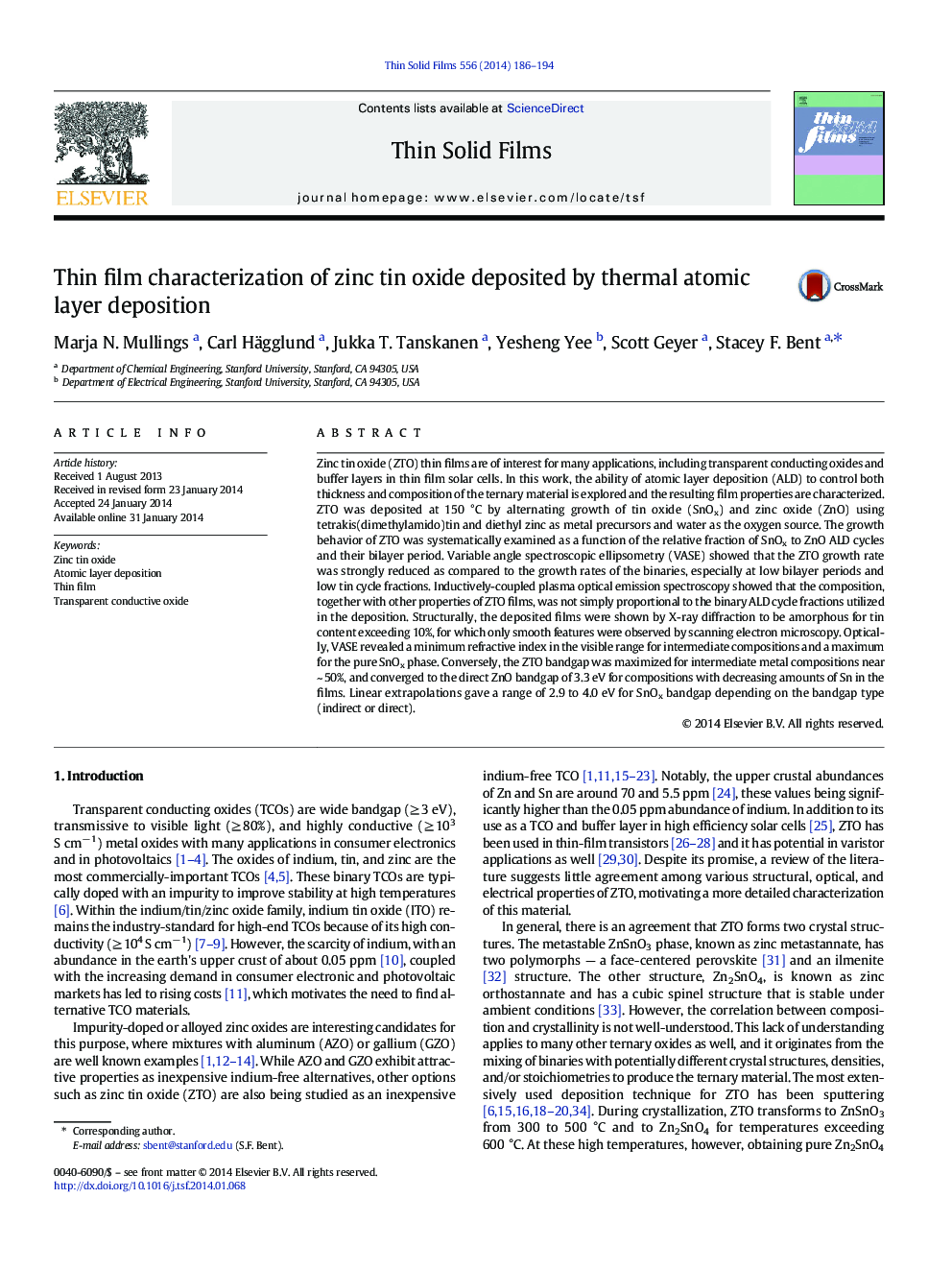| کد مقاله | کد نشریه | سال انتشار | مقاله انگلیسی | نسخه تمام متن |
|---|---|---|---|---|
| 8035163 | 1518048 | 2014 | 9 صفحه PDF | دانلود رایگان |
عنوان انگلیسی مقاله ISI
Thin film characterization of zinc tin oxide deposited by thermal atomic layer deposition
ترجمه فارسی عنوان
مشخصه فیلم نازک از اکسید قلع روی که توسط رسوب لایه حرارتی اتمی تشکیل شده است
دانلود مقاله + سفارش ترجمه
دانلود مقاله ISI انگلیسی
رایگان برای ایرانیان
کلمات کلیدی
اکسید قلع روی، رسوب لایه اتمی، فیلم نازک، اکسید رسانای شفاف،
موضوعات مرتبط
مهندسی و علوم پایه
مهندسی مواد
فناوری نانو (نانو تکنولوژی)
چکیده انگلیسی
Zinc tin oxide (ZTO) thin films are of interest for many applications, including transparent conducting oxides and buffer layers in thin film solar cells. In this work, the ability of atomic layer deposition (ALD) to control both thickness and composition of the ternary material is explored and the resulting film properties are characterized. ZTO was deposited at 150 °C by alternating growth of tin oxide (SnOx) and zinc oxide (ZnO) using tetrakis(dimethylamido)tin and diethyl zinc as metal precursors and water as the oxygen source. The growth behavior of ZTO was systematically examined as a function of the relative fraction of SnOx to ZnO ALD cycles and their bilayer period. Variable angle spectroscopic ellipsometry (VASE) showed that the ZTO growth rate was strongly reduced as compared to the growth rates of the binaries, especially at low bilayer periods and low tin cycle fractions. Inductively-coupled plasma optical emission spectroscopy showed that the composition, together with other properties of ZTO films, was not simply proportional to the binary ALD cycle fractions utilized in the deposition. Structurally, the deposited films were shown by X-ray diffraction to be amorphous for tin content exceeding 10%, for which only smooth features were observed by scanning electron microscopy. Optically, VASE revealed a minimum refractive index in the visible range for intermediate compositions and a maximum for the pure SnOx phase. Conversely, the ZTO bandgap was maximized for intermediate metal compositions near ~ 50%, and converged to the direct ZnO bandgap of 3.3 eV for compositions with decreasing amounts of Sn in the films. Linear extrapolations gave a range of 2.9 to 4.0 eV for SnOx bandgap depending on the bandgap type (indirect or direct).
ناشر
Database: Elsevier - ScienceDirect (ساینس دایرکت)
Journal: Thin Solid Films - Volume 556, 1 April 2014, Pages 186-194
Journal: Thin Solid Films - Volume 556, 1 April 2014, Pages 186-194
نویسندگان
Marja N. Mullings, Carl Hägglund, Jukka T. Tanskanen, Yesheng Yee, Scott Geyer, Stacey F. Bent,
